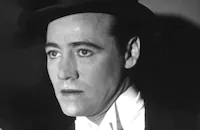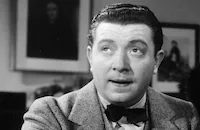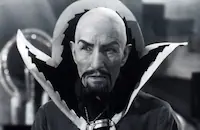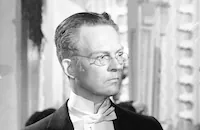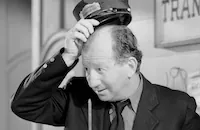Briskly directed by Michael Curtiz, the film tells a lot of story in little more than an hour. Based on a play, Tinsel Girl, by Maurine Dallas Watkins, who wrote the 1927 Broadway hit Chicago (1927), the second half of The Strange Love of Molly Louvain shares Chicago's cynicism about crime, criminals, and the press that is at odds with the romantic melodrama of the early part of the film. In his first Warner Bros. movie, Lee Tracy plays what would become the quintessential Tracy character: a brash, cynical, fast-talking, wisecracking reporter -- or public relations man, or anything to do with what was in those days called "ballyhoo". He makes a jaunty entrance, in robe and pajamas, sliding into the boarding house room where Molly is hiding out, answering the phone and having a staccato conversation in his Bugs Bunny voice. He's reporter Scotty Cornell, and he is chasing a story that, unknown to him, involves Molly. Later, the two share a snappy conversation loaded with pre-Code innuendo. He asks her name. She replies, "The boys call me Babe." Scottie retorts, "I knew that." Molly asks how he knew, and Scottie quips, "I'm a reporter - I read between the sheets." Suddenly, it's an entirely different movie, and by the end of the film, police, press, and Molly are all running around in a scene reminiscent of The Front Page. It doesn't make much sense, but it's an entertaining 74 minutes.
It was all a bit much for stuffy New York Times critic Mordaunt Hall, who harrumphed, "All that can be said in favor of The Strange Love of Molly Louvain...is that it has a cast of twenty players and that several of them strive hard to make their scenes diverting. But, with due respect for the zealous efforts of Lee Tracy and Ann Dvorak, this film is both wearying and unsavory." More than 80 years later, it is just the opposite: fast, funny, engaging, and with a pair of terrific lead performances.
Tracy, who had gone to Hollywood from the New York stage and spent a couple of years at Fox, was, like Dvorak, also very busy at Warner Bros. in 1932. He appeared in seven films, including one more with Dvorak Love is a Racket. Tracy played a reporter again, and Dvorak pined for Douglas Fairbanks Jr. Tracy moved to MGM in 1933, but although he gave good performances in "A" productions such as Dinner at Eight and
Dvorak had one more great pre-Code role in 1932, in Three on a Match, playing a socialite who falls for a gangster and deserts her husband and child, descending into depravity and drug addiction. She was a sensation in the film, and seemed headed for stardom. But in real life, Dvorak had fallen in love with Leslie Fenton, who played Nick Grant in The Strange Love of Molly Louvain. The two eloped and sailed off on a year-long honeymoon, angering studio officials. Her career never really recovered, and in 1940, she moved to England to be with Fenton, a British citizen who was serving in the British military during World War II. Her film work after the war was sporadic, and she retired in 1951.
Director: Michael Curtiz
Screenplay: Erwin Gelsey, Brown Holmes, based on the unpublished play Tinsel Girl by Maurine Watkins
Cinematography: Robert Kurrie
Editor: James Morley
Art Direction: Robert Haas
Principal Cast: Ann Dvorak (Molly Louvain), Lee Tracy (Scottie Cornell), Richard Cromwell (Jimmy Cook), Guy Kibbee (Pop), Leslie Fenton (Nicky Grant), Frank McHugh (Skeets), Evalyn Knapp (Sally), Charles Middleton (Captain Slade), Mary Doran (dance hall girl)
BW-74m.
by Margarita Landazuri









